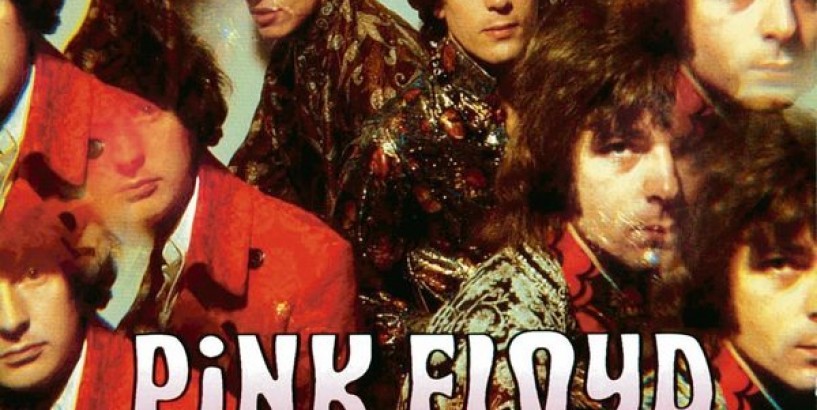As rock’s most famous chameleon, the late David Bowie was an innovator and a visionary. Always reinventing himself and his music, he was considered to be several steps ahead of his peers. His transformations—first to Ziggy Stardust, then to the Thin White Duke, and, thereafter, to Aladdin Sane, characters matched with different styles of genre-defying music—will probably remain memorable for years to come. Sometimes his vision could be eerily prescient. In 1969, a few days before the Apollo 11 mission landed man on the moon for the first time, Bowie released a single, Space Oddity , a song inspired by Stanley Kubrick’s 2001: A Space Odyssey .
The song deals with the saga of Major Tom (one of Bowie’s early alter egos), an astronaut on a space mission. A few days after that compellingly enjoyable song was released, and BBC, like many other TV channels across the world, provided live coverage of the moon landing mission, it chose to play Space Oddity during the broadcast. The lyrics, familiar to everyone who is a Bowie fan (who isn’t?), begin with: Ground Control to Major Tom/ Ground Control to Major Tom/ Take your protein pills and put your helmet on/ Ground Control to Major Tom (ten, nine, eight, seven, six)/ Commencing countdown, engines on (five, four, three)/ Check ignition and may God’s love be with you (two, one, lift off).
Bowie, then 22, was said to be a bit foxed by BBC’s choice, because Space Oddity wasn’t a happy song. It was hauntingly sad. In it, Major Tom actually loses control with Earth, wafts into outer space, and is lost. Not exactly great sentiments with which to complement a historic mission to the moon. BBC reportedly realized this a few days into its coverage and quickly yanked the song off its script. Space, science fiction and futuristic vision continued to influence Bowie in his many avatars—in 1980’s Ashes To Ashes , Major Tom reappears, this time regaining contact with Earth, but that song too ended in sadness when Ground Control thought he was a junkie and dismissed him.
Both before and after July 1969, when astronauts Neil Armstrong, Buzz Aldrin and Michael Collins successfully completed the mission to the moon, many musicians have been inspired by the so-called “giant step for mankind". Some songs, written after the Apollo 11 mission, made direct references to the feat, but others preceded that event. In 1967, when Pink Floyd launched their debut album, The Piper At The Gates Of Dawn , they first explored “space rock" in the song Astronomy Domine , written by Syd Barrett. It begins with a reading of a list of planets, stars and galaxies that could sound like an astronaut’s communication with the base station on Earth. It then progresses into what is perhaps one of rock’s first psychedelic explorations with the theme of travelling to planets, the moon and stars.
Since 1969, there have been songs that have referenced the moon landing but sometimes in more nuanced ways. The moon landings (the first in 1969 was followed by several successful subsequent attempts) also spawned a host of conspiracy theories that alleged they were all stage-managed and fake. Those theories have all been debunked but in 1992, when American band R.E.M. released Automatic For The People , the album had a track titled Man On The Moon . The song is actually an ode to Andy Kaufman, an American comedian who died in 1984, but as its chorus, it has the lines If you believed they put a man on the moon, man on the moon/ If you believe there’s nothing up his sleeve, then nothing is cool , an indirect reference to the conspiracy theories that alleged Kaufman’s death was faked.
In 1989, when the late-era Grateful Dead studio album Built To Last was released, it had a Jerry Garcia-Robert Hunter song titled Standing On The Moon . The song’s intricately layered words, which describe looking at Earth from the moon’s surface, can be (typically for a Grateful Dead song) interpreted in many ways. Garcia sings: Standing on the moon/ I got no cobweb on my shoe/ Standing on the moon/ I’m feeling so alone and blue/ I see the Gulf of Mexico/ As tiny as a tear/ The coast of California/ Must be somewhere over here, over here . Soon the trippyness changes gear as he sings: I see all of south-east Asia/ I can see El Salvador/ I hear the cries of children/ And the other songs of war/ It’s like a mighty melody/ That rings down from the sky/ Standing here upon the moon/ I watch it all roll by, all roll by .
There are lists of songs that celebrated or made allusions to space expeditions, including the moon missions, which can be googled. The American new wave band The B-52s’ has a song titled Planet Claire , and another, somewhat curiously titled There’s A Moon In The Sky ( Called The Moon ). In 2003, on their album Hail To The Thief , Radiohead had a song titled Sail To The Moon . It’s actually a piano-led ballad in which singer Thom Yorke invokes an image of sailing to the moon to describe how his young son could explore life.
But here’s a quick question: Which song do you think the Apollo 11 crew played on its journey to the moon? It was one that dated back to the 1950s. Five years before the moon missions, in 1964, Frank Sinatra recorded his version of the song Fly Me To The Moon , a standard written by Bart Howard in the mid-1950s. Sinatra was accompanied by Count Basie, the jazz pianist, and the song was about flying to the moon, playing among the stars and seeing what spring was like on Jupiter and Mars. That was the song the Apollo 11 astronauts played—it was reportedly Armstrong’s favourite tune!
First Beat is a column on what’s new and groovy in the world of music.
@sanjoynarayan









